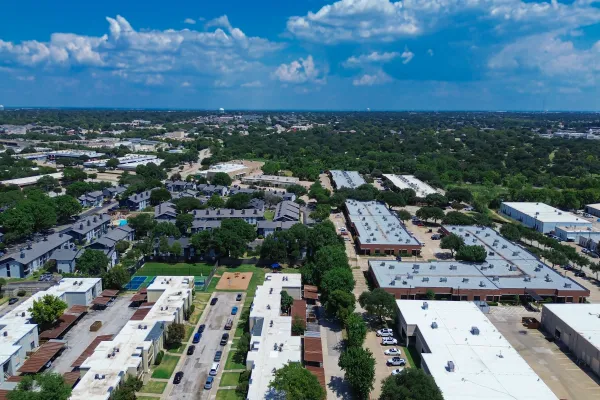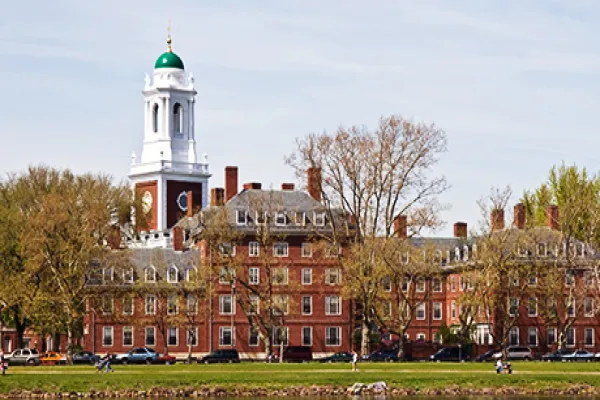July's election was a real who-won-it, but Felipe Calder—n is expected to take the presidency with the slimmest of margins. Can he build a coalition to push through reforms, or will the legislative gridlock persist?
Even as Mexico grapples with the fallout from its bitterly disputed presidential election, two things are clear: The new leader will enter office in December with a weak mandate, and the country's political landscape has shifted in a way that bodes ill for economic reform.
Early this month the Federal Electoral Court is expected to declare Felipe Calder—n, candidate of the ruling Partido Acci—n Nacional, the winner over AndrŽs Manuel L—pez Obrador of the center-left Partido de la Revoluci—n Democr‡tica. Intitial results showed Calder—n winning by the narrowest margin in Mexican history: 243,934 out of 42 million votes cast.
The July 2 election provided a stark contrast to PAN leader Vicente Fox's 2000 presidential victory, when Mexicans were wildly enthusiastic over the prospects for change. Fox beat his opponent by a 7-point margin, ending the 71-year rule of the Partido Revolucionario Institucional and sealing Mexico's transition to democracy. But he proved a mediocre political operator, unable to create alliances. His term was plagued by legislative gridlock as the PRI, smarting from its defeat, and the PRD, ideologically opposed to Fox's program, blocked his initiatives. He secured none of the major reforms he touted, and the economy, though estimated to increase by about 4.5 percent this year, has fallen far short of his promise of 7 percent annual growth. Fox's successor could find himself in a similarly frustrating position.
"What is at stake in Mexico is governability," says Walter Molano, director of emerging-markets research with BCP Securities in Greenwich, Connecticut. "The country and the polticial system are fragmenting."
The July presidential vote split the country along regional lines, with the north voting for Calder—n and the south, including Mexico City, voting for AMLO, as L—pez Obrador is popularly known. "The north bought the idea of the risk of change, and the south bought the idea of the need for change," says Roy Campos, president of Mexico City-based Consulta Mitofsky, the polling agency for Mexico's Televisa network.
Voters may have narrowly decided to stick with PAN, but there's no disputing the need for reform: Fiscal, labor and job creation policies need overhauling, and the national oil monopoly, Petr—leos Mexicanos, or Pemex, is rapidly depleting its reserves. More broadly, Mexico quickly needs to improve its ability to compete. Its share of the U.S. market has been surpassed by China's, its wages are too high to compete with other emerging economies, and its technology is insufficient to shift to more-specialized manufacturing. The educational system prepares workers poorly for the global economy, and the high poverty rate stifles domestic demand.
But in contrast to these deep-rooted problems, Mexico's new president will also inherit a government budget that's swelling with oil revenues and an economy flush from export sales, backed by more than $75 billion in international reserves and declining public debt. Some observers, however, see this bright spot as a potential source of dangerous complacency.
"My concern is that with the abundance of resources available to the federal government from oil, the magnitude of remittances and foreign direct investment, policymakers will have a limited appetite to take on politically sensitive reforms," says Gray Newman, chief of Latin America research for Morgan Stanley in New York.
Calder—n, 44, supports supply-side policies aimed at increasing private investment; he plans to dismantle the PRI legacy of state enterprises, labor rights and nationalism. Still, he took the election results to heart: Only nine days after the election, he acknowledged social demands reflected in the vote for reducing poverty, inequality and the lack of employment. The AMLO social platform stressed low-cost housing and modest pensions for the elderly. A career politician, Calderon is a lawyer and earned a Master's in public policy at Harvard University. He was national president of PAN and a two-time federal deputy who led the PAN bloc in congress. Under Fox, he was briefly Energy minister.
Also a career politician, L—pez Obrador, 52, is a shrewd operator and a committed social activist who emphasizes stimulating domestic demand funding public projects and broad social programs. Although he alienated Mexico's middle class and many establishment figures, he led the polls until three months before the July vote, sending the message that for the first time in modern Mexican history, a leftist with populist leanings could win the presidency. After the election he staged the largest protest rallies the country had ever seen, twice massing more than 1 million people to demand a full recount.
L—pez Obrador's popularity has strengthened the 15-year-old PRD, which today outnumbers the PRI in Congress. "Now there is an opposition - there hasn't been one in 20 years," says PRI politician and former Interior minister Manuel Bartlett.
Mexico's new president will need to build a consensus within the confines of a new political landscape. The July congressional races produced historic results: PAN is now the largest bloc in both houses, and the PRD-led coalition advanced to become the country's second-strongest political force. The formerly all-powerful PRI fell to an astonishing third place and failed to win even one of the four statehouses up for grabs.
Although the PRI's omnipotence has been shattered, the party can still swing plenty of weight in coalition politics. Both PAN and the PRD will court the onetime ruling party; with the PRI's help, the PRD could command enough votes to block Calder—n's attempts to reform the Constitution and undo the PRI legacy by opening oil and power to private investment and rolling back labor rights. "I don't expect Calder—n to be able to approve broad reforms because of the opposition of the PRD and part of the PRI," Ricardo Amorim, head of Latin America research for West LB in New York, tells Institutional Investor.
Nonetheless, Calder—n has in the past proven to be an able negotiator. Some observers believe that despite his shaky mandate, he could cobble together enough votes for constitutional reforms that require a two-thirds majority in Congress. "A lot depends on whether the current polarized environment becomes less tense," says Felix Boni, director of equity research at Scotia Bank in Mexico City.
Since the July elections Calder—n's party has a newfound pragmatism, observers note. "PAN is willing to play [politics] with everything the PRI did - mud-slinging, corporatist pacts," says Jose Antonio Crespo, a political columnist based at Mexico City's El Universal newspaper.
Pemex presents one of the biggest problems facing Mexico's new president. Although the country is a leading oil producer with abundant gas reserves, it imports gasoline and natural gas, and its oil reserves are set to run out in a decade. Mexico needs to improve drilling, pumping and refining and the production of oil derivatives but lacks the funds to do so because it has served as the government's cash cow since oil was nationalized in 1938. Pemex contributes about 35 percent of the annual federal budget.
Traditionally, the giant oil company's revenues have compensated for Mexico's low tax-collection rate. Under Fox, spending expanded sharply, but tax collections grew only slightly, to less than 14 percent of GDP. Calder—n, meanwhile, has proposed a flat tax that his own advisers admit will further reduce collections. (AMLO's chief economic adviser Rogelio Ram’rez de la O says tax revenues could drop by as much as 2 percent of GDP, depending on the flat tax rate.)
Although the federal budget is now balanced, public finances are strained. Fiscal reform efforts by Fox and his predecessor, Ernesto Zedillo, were rejected by legislators who believed the proposed 15 percent value-added taxes on food and medicine would be unpalatable to the public.
Job creation was a central plank in the platforms of both Calder—n and L—pez Obrador, for good reason: About half of Mexico's working population is employed in makeshift jobs that provide no benefits. Higher employment would mean more tax revenues, increased domestic demand and a lower emigration rate. During Fox's presidency, migration to the U.S. held steady at about 450,000 people a year. Calder—n bases his strategy on a friendly investment climate and a flexible labor regime.
But generating jobs requires effective policy. Mexico's basic education and vocational training need improvement; administrative systems should be streamlined and regulations revised to encourage the small businesses that account for 85 percent of all Mexican jobs and now largely lack access to credit. Mexican small businesses require technical advice and strategic planning to identify products they can successfully produce and export.
The country's eroding competitiveness should head the policy agenda, but politicans will need the courage to buck entrenched interests. "Mexico is built upon two monopolistic groups: businesses and official unions," says Javier Livas, a PAN-activist-turned-AMLO-sympathizer.
"In Mexico we have a pro-market discourse and antimarketpolicies," says Manuel Camacho Sol’s, L—pez Obrador's top political adviser, alluding to the need for greater competition in business.
Neoliberal orthodoxy has dominated Mexico's economic policy since 1982, when Miguel de la Madrid took office, but the thin margin in this summer's presidential vote indicates that the public believes the economic reform process may be socially unsustainable. If he takes the presidential sash on December 1, Calder—n will trade a meager mandate for a tremendous challenge. He will be asked to "create a social reform, take up the AMLO program and at the same time continue the structural reforms," says Alfredo Thorne, chief of Latin America research for J.P. Morgan Chase & Co. in Mexico City. Mexican voters may have opted for the continuity candidate, but they remain hungry for change. i





